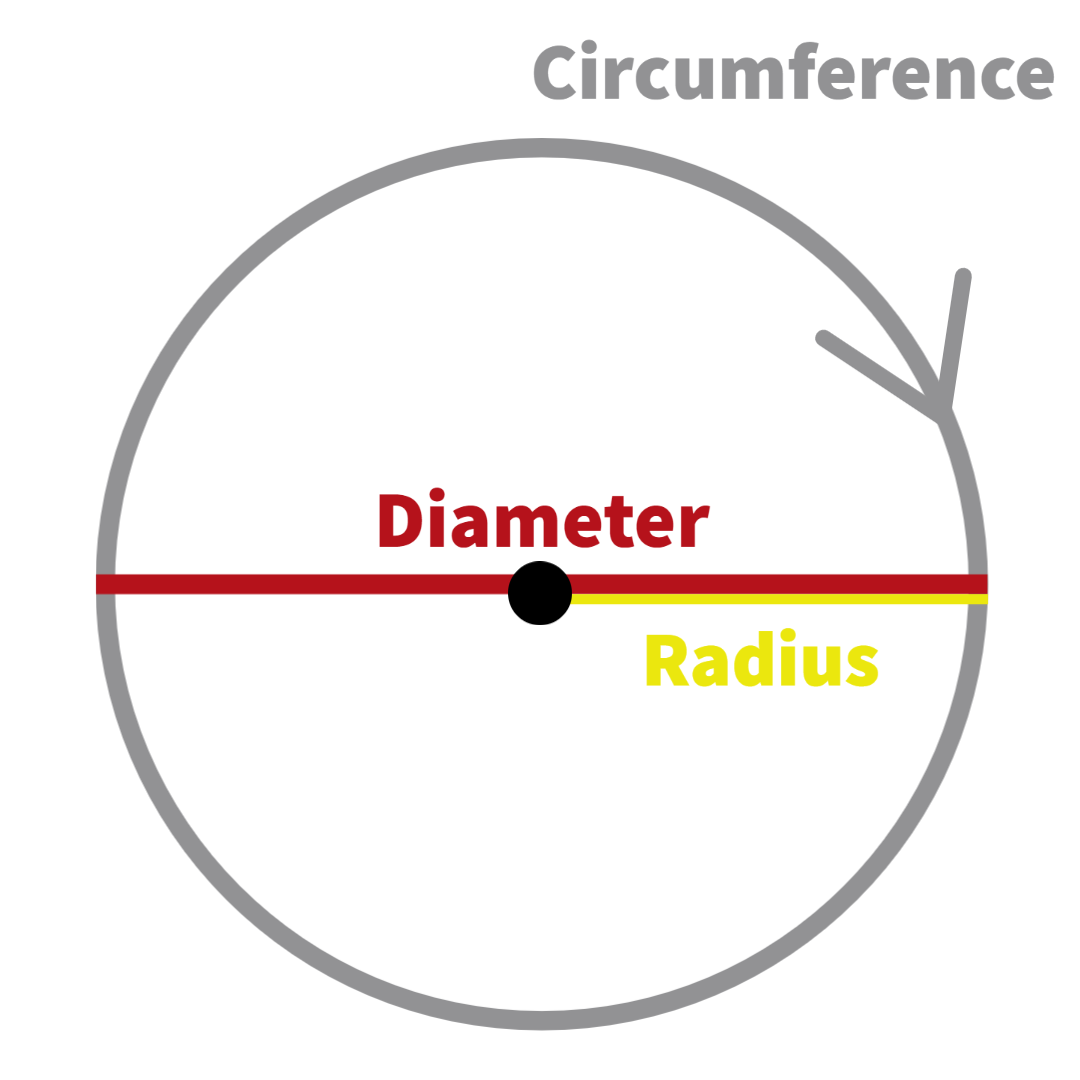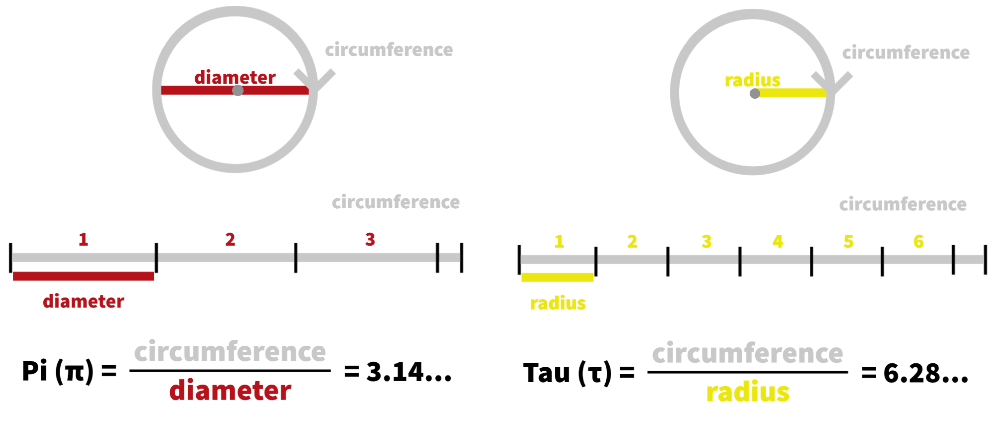
Here at Mathnasium, we love pi (π) and we celebrate it BIG every year on March 14 (3/14). But do you know there is an alternative mathematical constant that is just as (if not more) important to geometric and trigonometric calculations? Its name is tau, represented by the Greek letter τ. And today, on June 28 (6/28) — known to us as Tau Day — we recognize this constant, whose value is approximately equal to 6.28.
Pi is the circle constant — it defines a circle, which is made of all the points that are the same distance (the radius) from a centre point.
The diameter of a circle is the straight distance from one side to the other through the centre of the circle. The distance from the centre to the outside of the circle is called the radius, (measuring half of the diameter). The circumference is the distance around the circle, equal to 2π times the length of its radius. When talking about circles and working with their equations, we primarily use the radius.

This brings up a controversial argument for mathematicians: if the radius is at the core of all circle formulas, then the circle constant pi should be defined in terms of the radius. But it is not! Pi is the ratio between the circumference and diameter of a circle. Tau, on the other hand, is the ratio between the circumference and radius of a circle; simply put, it is double the value of pi, (τ = 2π).

The controversy around pi versus tau has only recently become well-known. Since the early 2000s, mathematicians such as Bob Palais (with his opinion piece, “π Is Wrong”) and Michael Hartl (with his “The Tau Manifesto”), have proposed replacing the fundamental circle constant pi, with tau. The claim is that the use of 2π (a full turn around a circle) makes the most logical sense in the context of circle geometry and trigonometry, as it is more natural. And, as we have seen, the definition of tau relies on the radius of a circle, making it a more-natural circle constant because the definition of a circle also relies on the radius.
In fact, several mathematical formulas are argued to be clearer when tau is used instead of pi. It’s no coincidence that tau’s symbol (τ) visually resembles that of half of pi’s (π). Both are associated with turns within a circle, but tau helps make certain concepts a lot simpler and more intuitive.
Although we love our pi, it’s fair to say that perhaps mathematics would be simpler if tau was more involved. To learn more about tau, check out the resources below or reach out to your nearest Mathnasium Learning Centre.
Resources:
Tau vs Pi Smackdown - Numberphile
The Tau Manifesto | Michael Hartl | Talks at Google





